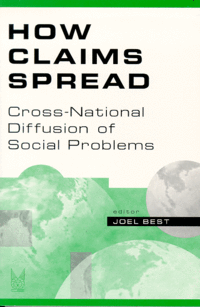

![]()
![]()

What makes this volume unique is the elaboration of international case studies that demonstrate how claims spread across international boundaries. While diffusion necessarily occurs in the spread of claims about what constitutes a social problem, the reasons why some claims spread, and others do not, requires explanation. At the international level, such reasons may be complicated indeed, encompassing as they do border differences, language barriers, and differences in cultural understanding. The very receptivity to certain claims may be predicated on references to political and historical relationships between countries. Clearly, the diffusion of claims is not a natural process, but one mediated by social, historical and cultural features that say a great deal about claims-makers themselves.
The first four chapters examine the spread of claims between the United States, Canada and Great Britain. Public issues such as the "undefended border" between Canada and the United States are examined, as well as the attempt by antiabortion activists to promote a "postabortion syndrome" in the US and Britain. Robert Lilly examines the attempt to construct the "dangerous gun culture" in Britain on the part of claims-makers for new gun control laws, and Frank Furedi looks at the social construction of bullying in Britain. Joel Best and Fran Furedi then examine claims about 'road rage' in both the US and Britain, followed by Tadashi Suzki's examination of Japanese arguments against 'pornocomics' (1989-1992). Other essays on contemporary youth music and risk, sex-offenders, sexual harassment, smoking and the adoption of the metric system, follow.
By outlining the dominant frames used in constructing these different social problems, the authors contribute a broad understanding of the wide diffusion of claims, as well as the manner in which national and specific historical and political arrangements affect their receptivity. In short, this volume is needed for providing an understanding of how claims are received and generated within widely different, but at times similar, national contexts. It also speaks to the power of globalized media systems in reproducing tropes that can be used by national groups to construct claims across borders.
Talmadge Wright
Loyola University, Chicago